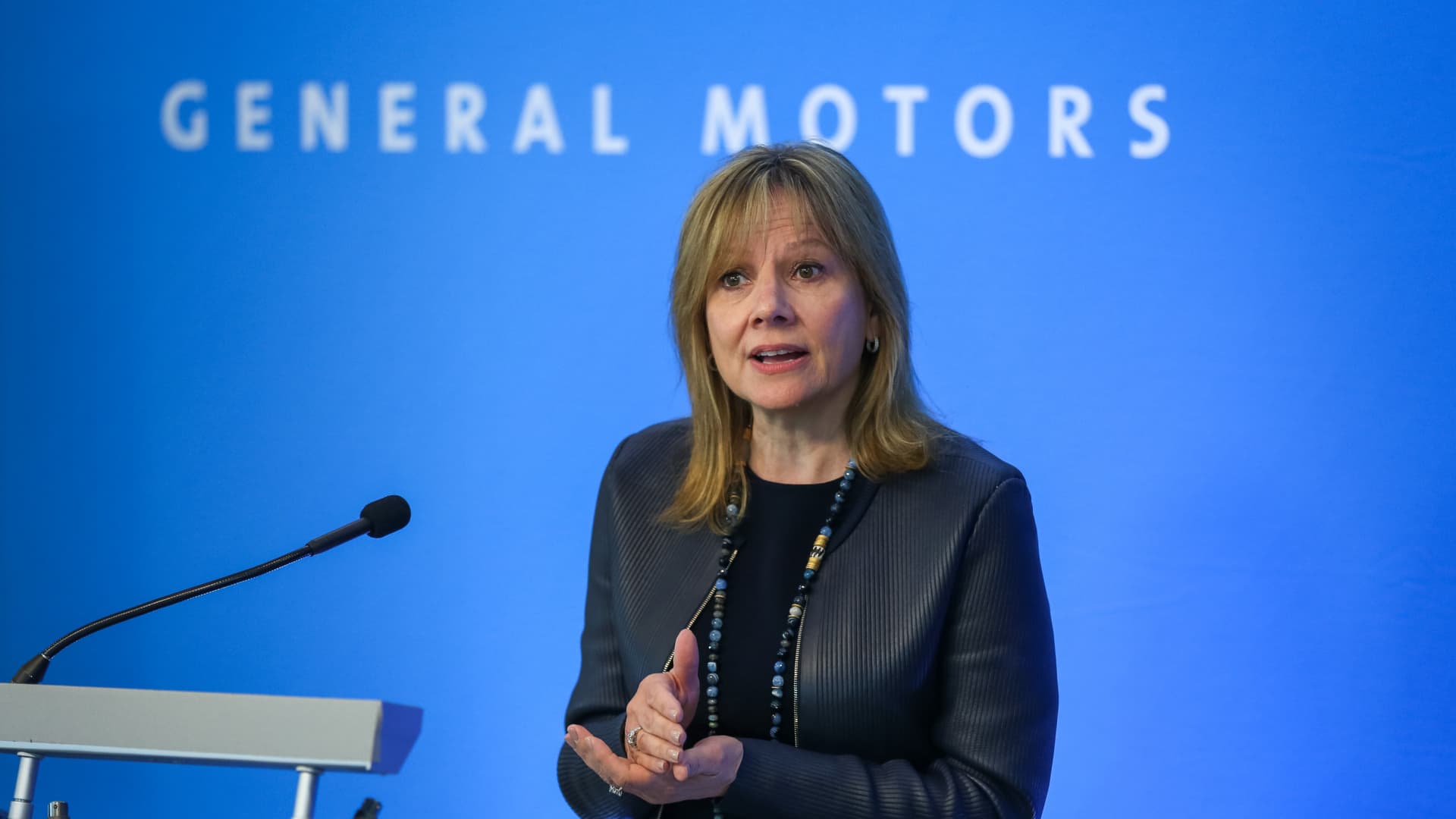General Motors reported second-quarter earnings Tuesday that missed Wall Street’s estimates after the company was unable to ship nearly 100,000 vehicles by quarter-end due to parts shortages.
But the company maintained its previous earnings guidance for the full year, saying it’s confident it will be able to ramp up production in the second half of 2022. It also confirmed it has locked in sufficient supplies of critical battery-related materials to support its mid-decade EV plans.
The company’s shares closed down 3.4% on Tuesday.
Here are the key numbers, compared with Wall Street’s consensus expectations as compiled by Refinitiv.
- Adjusted earnings per share: $1.14, versus $1.20 expected and $1.97 in the second quarter of 2021.
- Revenue: $35.76 billion, versus $33.58 billion expected and $34.17 billion in the second quarter of 2021.
- EBIT-adjusted: $2.34 billion, versus $4.12 billion in the second quarter of 2021.
- EBIT-adjusted margin: 6.6%, versus 11.2% in the first quarter of 2022 and 12.0% in the second quarter of 2021.
CEO Mary Barra said in a statement that GM has “binding agreements” securing all of the battery-related raw materials it will need to build 1 million electric vehicles annually in North America by 2025, including “new multi-year agreements” announced Tuesday with Livent for lithium, and with longtime GM battery partner LG Chem for cathode material.
Like other global automakers, GM has been working through supply chain disruptions for the last several quarters as Covid-19 outbreaks – and more recently, Russia’s invasion of Ukraine – have forced factory shutdowns and wreaked havoc with logistics around the world.
Those disruptions have been felt at GM’s U.S. dealers, where inventories continue to be tight. The dealers have had just 10 to 15 days’ worth of inventory over the last year, including through the second quarter, the company said Tuesday. That’s much tighter than the 60 to 90 days’ worth that was typical before the Covid-19 pandemic.
But GM expects to get more vehicles to its dealers soon. The company told investors on July 1 that it had about 95,000 vehicles with missing components in its inventory. It confirmed on Tuesday that it expects to complete and ship those vehicles — many of them high-margin SUVs — over the next few months.
GM, like most automakers, books revenue when a completed vehicle is shipped to dealers, not before.
“We have been operating with lower volumes due to the semiconductor shortage for the past year, and we have delivered strong results despite those pressures,” Barra said. “There are concerns about economic conditions, to be sure. That’s why we are already taking proactive steps to manage costs and cash flows, including reducing discretionary spending and limiting hiring to critical needs and positions that support growth.
“We have also modeled many downturn scenarios and we are prepared to take deliberate action when and if necessary,” she said.
Barra said that GM is still confident that it will meet its previous guidance for the full year. The company expects net income of between $9.6 billion and $11.2 billion for 2022.
“This confidence comes from our expectation that GM global production and wholesale deliveries will be up sharply in the second half,” she said.
Correction: General Motors reported an EBIT-adjusted margin of 6.6% for the second quarter of 2022. An earlier version of this story misstated the number.
